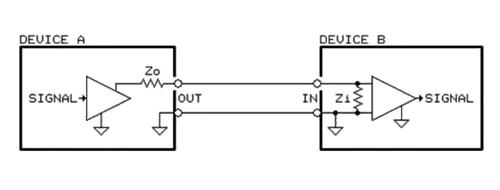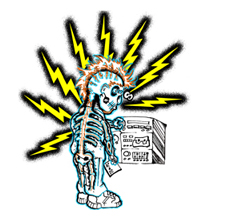While hum and buzz are often blamed on “improper grounding,” actually, this is rarely the case.
Properly installed, fully code-compliant AC power distribution systems will develop small, entirely safe voltage differences between the safety grounds of all outlets. These normally insignificant voltages cause problems only when they couple into the signal path at a vulnerable signal interface.
Let’s look at why unbalanced interfaces are extremely prone to this coupling and cause noise problems even when no safety ground connections exist. I find it ironic that virtually all consumer electronics, including the most expensive audiophile gear, still uses this trouble-prone interface.
In my opinion, equipment with unbalanced input or output connections is unworthy of the term “professional.”
Every signal interface consists of a line driver at the output of device A, the line (or cable) itself, and a receiver at the input of device B.
The line, like every electrical circuit, must have two conductors. Whether a given interface is balanced or unbalanced depends ONLY on the IMPEDANCES of these two conductors with respect to a ground reference. In AC circuits, impedance is the functional equivalent of resistance.
As shown in Figure 1, in an unbalanced interface, one conductor is grounded (i.e., zero-impedance) and the other has some higher impedance.
When an output is connected to an input, the output impedance (Zo) of the driver (often unspecified by equipment makers) and the input impedance of the receiver (Zi) form a series circuit.

Since the same current flows in all parts of a series circuit, voltage drops are proportional to impedances, and the arrangement is sometimes called a voltage divider.
To deliver maximum signal voltage, Zi must be much larger than Zo. In typical equipment, Zo is 1 kilo ohms or less and Zi is 10 kilo ohms or more. This transfers at least 90 percent of the available signal voltage.
There is a common misconception that audio outputs and inputs must be impedance matched. This idea stems from a practice necessary only with extremely long cables, such as telephone line pairs.
Energy travels in a cable at 70 percent to 90 percent of the speed of light and the distance traveled during one signal cycle is its wavelength.
Any cable will begin to exhibit “transmission line” effects when its physical length is 10 percent or more of a wavelength at the highest signal frequency. Transmission line effects occur in video cables over a few feet long and with CATV cables over a few inches long.















